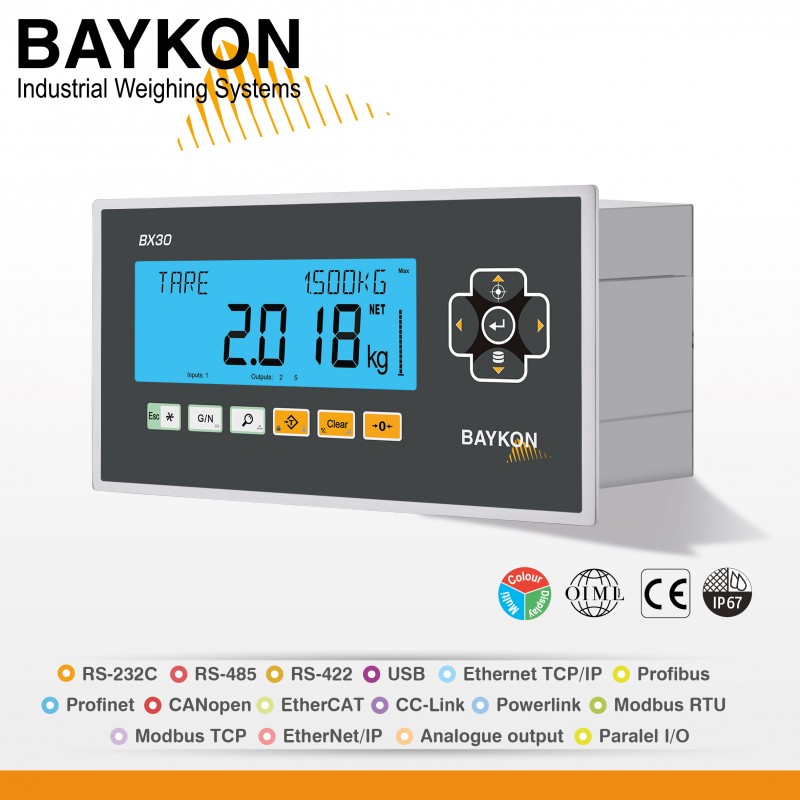
You are viewing the Ohaus weighing news at Golden Lotus Measuring equipment [can dien tu hoa sen vang]
Secure Your Weighing
Weighing is the most commonly performed task in a laboratory. For almost every research process or analysis something needs to be weighed, whether it is a single sample for further processing, or a compound or agent used in a recipe. A balance is always needed to establish the weight of a specific substance.
Bạn mong muốn tìm kiếm cân công nghiệp chính hãng chất lượng cao hay cân điện tử giá rẻ, hãy cho Hoa sen vàng biết và nhận sự tư vấn nhiệt tình-chu đáo, sản phẩm đều có giá trị và đặc tính riêng của chúng … hãy Gọi ngay : 028 3511 7799 (kinh doanh) hoặc truy cập website: https://hoasenvang.com.vn/shops/ (sản phẩm)
Weighing topic is covered by USP chapter 41 "Balances" and further recommendations are described in chapter 1251 "Weighing on an Analytical Balance". The regulation applies to accurate measurements focusing especially on the fact of calibrating the balance before using it for any weighing. This regulation defines also repeatability and accuracy test, including acceptance limits that are still permissible when weighing samples accurately. US Pharmacopeia describes Minimum Weight as the minimum load that is being measured within the permissible error limits. This starting point, the minimum weight value, is calculated based on repeatability test of a minimum of 10 measurements, using the same weight. The weight in question is not specified, but a load of a few percent of the capacity of the tested instrument is recommended. For instance, a 220g capacity balance could be tested using a 10g weight corresponding to 5% of the instrument's capacity. Repeatability is considered satisfactory if two times the standard deviation of the weighed value, divided by the desired smallest net weight does not exceed 0,10%.
Where:
SD – Standard deviation
N – Desired smallest net weight
If the standard deviation obtained is less than 0,41d, where d is the readability of the instrument tested, the value should be replaced by 0,41d. In such case, the repeatability is satisfactory if two times 0,41d divided by the desired smallest net weight does not exceed 0,10%.
The minimum weight value, being the starting point of operating range of the balance can be determined the following way:
Where:
SD – Standard deviation
N – Desired smallest net weight
If SD is less than 0,41d it should be replaced by 0,41d and the final minimum weight value is calculated as follows:
This means that the minimum weight of a balance with good repeatability starts at 820d, where d is the readability.
This defines the optimal minimum weight, a starting point from which any weighing will comply with the USP requirement.
| Balance's readability | d (g) | Optimum minimum weight (820d) |
| 0,01mg | 0,00001 | 0,00820g |
| 0,1mg | 0,0001 | 0,0820g |
| 1mg | 0,001 | 0,820g |
| 0,01g | 0,01 | 8,20g |
| 0,1g | 0,1 | 82,0g |
It is the ideal situation, however the reality might show that SD is greater than 0,41d, aand in such case the minimum weight value calculated for a particular device might differ from the optimum shown in the table above.
The weight used for accuracy test is suitable if its nominal mass falls between 5% and 100% of the balance's capacity. Accuracy of such a balance is considered satisfactory if the results are within 0,10% of the test weight value and the MPE (maximum permissible error) of the test weight should not exceed one-third of this 0,10%. This means that only calibrated weights can be used for performing such a measurement and class of the weight that fits must be checked accordingly. OIMLR111-1: 2004 (E) regulation, chapter 5.2.3. Table 1 is a great tool to select the right class of the weight meeting the accuracy requirement above.
Case Study:
There is an Explorer EX225/AD sitting in the lab and it needs to be checked against minimum weight. The balance's capacity is 220g and readability for the full range is 0,01mg. The lab in question complies with USP guidelines and all measurements taken with this instrument must be performed taking uncertainty (U) lower than 0,10% and using expansion factor (k) of 2.
To establish the minimum weight value the operator needs to perform a repeatability test using a test weight. Nominal value of the weight is advised to be at 5% of the capacity of the balance – in this case it is going to be 10g weight.
Having performed 10x measurement, remembering to zero the balance after each measurement, the operator can calculate the standard deviation and the minimum weight value for this particular balance using formulas given above.
Not only pharmaceutical laboratories follow this regulation. Depending on the industry and type of samples measured with a balance, the uncertainty parameters can differ from the USP ones, however it is always important to know that the measured value comply with the posted requirements. The readout error can reach up to 100%, and handling volatile, important or expensive samples must be done in accordance with certain rules.
For instance, actual and displayed values of EX224, an analytical balance with 200g capacity and 0,1mg readability will be as follows:
| Actual weight (g) | Displayed Value(g) | Relative measurement error |
| 0.00005 | 0.0001 | 100.000000% |
| 0.00095 | 0.0010 | 5.263158% |
| 0.00995 | 0.0100 | 0.502513% |
| 0.09995 | 0.1000 | 0.050025% |
| 0.99995 | 1.0000 | 0.005000% |
| 9.99995 | 10.0000 | 0.000500% |
| 99.99995 | 100.0000 | 0.000050% |
| 199.99995 | 200.0000 | 0.000025% |
Reaching a measurement that complies with the maximum permissible error accepted by a specific user can be achieved with the use of minimum weight function.
Table below shows the minimum weight values with the most commonly used parameters. Figures are calculated with standard deviation of 0,41d. Balance in question is the same EX224as for the example above with 200g capacity and 0,1mg readability.
| Weighing Accuracy % (U) |
Expansion Factor (k) | ||
| 1x (no expansion factor) |
2x (expansion factor of 2) |
3x (expansion factor of 3) |
|
| 0,10 | 0,0410g | 0,0820g | 0,1230g |
| 1 | 0,0041g | 0,0082g | 0,0123g |
The exact minimum weight value is balance-specific and should be established by a professional party during a qualification procedure.
Explorer Series, the flagship balances line from OHAUS is equipped with features helping the user make sure their measurements are always correct.
A built-in Routine Repeatability Test helps verifying the pre-established minimum weight value for
a particular balance. Result of the testing is a reference table for comparison purposes. The only thing the operator needs to do is to put a weight 10 times on the pan. The balance will perform all the calculations and finalize the process with a results table showing the minimum weight values depending on the chosen criteria.
Another feature that helps making sure the weighing results meet the accuracy parameters is the visual below-minimum weight indication.
When in weighing mode, the minimum weight function can be activated. Upon entering the respective minimum weight figure, the balance will show "below minimum weight" message on the display until the correct value is reached. This not only helps meeting accuracy but also prevents incorrect results to be printed, sent to a peripheral device or recorded in the log file.
There is also one more issue faced in a lab, especially when weighing relatively small samples. Depending on the type of the sample as well as ambient conditions, humidity especially, samples might be prone to electrostatic charges. When readability of 0,01mg is needed even small electrostatic charge can adversely influence the weighing results and cause errors in measurement, or troubles reaching a stable result. Explorer balances come to the rescue again. Semi-Micro models with automatic draftshield doors are equipped with a built-in ionizer that removes electrostatic charges from samples or weighing boats in the weighing chamber. This helps ensuring that the weighed sample as well as the container are free of electrostatic charges, and the results are safe and accurate. And all of this can happen upon a press of a button or a wave over an IR sensor, touchless way.
In case the balance is not equipped with an ionizer as standard, OHAUS offers a standalone device that works independently of any weighing equipment. When activated, it frees the surrounding area from any static charges and creates a working zone within 10-40 cm diameter from the device.
Explorer is the flagship balance from OHAUS. It combines modern features and design elements to offer unmatched functionality in a line of high-performance balances unlike any other on the market. These smart and intuitive balances simplify even the most complex laboratory measurements, making sure the results are always accurate.
Learn more about Explorer Series balances
✨The latest news at Blog.hoasenvang.com.vn, #candientuohaus #hoasenvang #ohaus #oahusscales #ohausweighing news on accuracy equipment physics and all weighing balance devices, Can dien tu Ohaus all free news and non-profit, Yes.. All purpose serving you is my pleasure. Headquartered in Parsippany, NJ, OHAUS Corporation manufactures an extensive line of weighing scales, lab equipment and lab instruments that meet the weighing, sample processing and measurement needs of multiple industries. We are a global leader in the laboratory, industrial and education markets, as well as a host of specialty markets, including the food preparation, pharmacy and jewelry industries. An ISO 9001:2008 manufacturer, OHAUS lab balances, industrial scales, lab equipment and lab instruments are precise, reliable and affordable, and backed by industry-leading customer support.
Secure Your Weighing
? [High quality Ads] Can dien tu cong nghiep chinh xac GLS at With genuine products and prices at the edge of the page, YEAH you will be satisfied Cân siêu thị Hoa sen vàng – Golden Lotus Measuring Equipment, weighing scales news, electronic scale news, load cell news, retail scale news, industrial scale news, …
* Thiết bị hiển thị đo lường






No Responses Yet